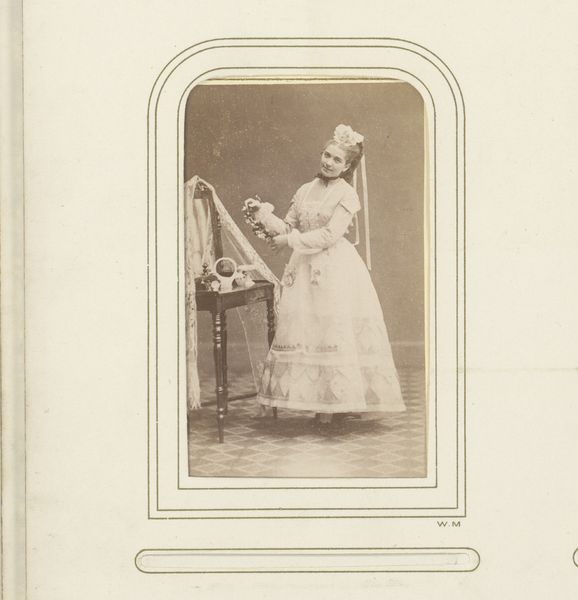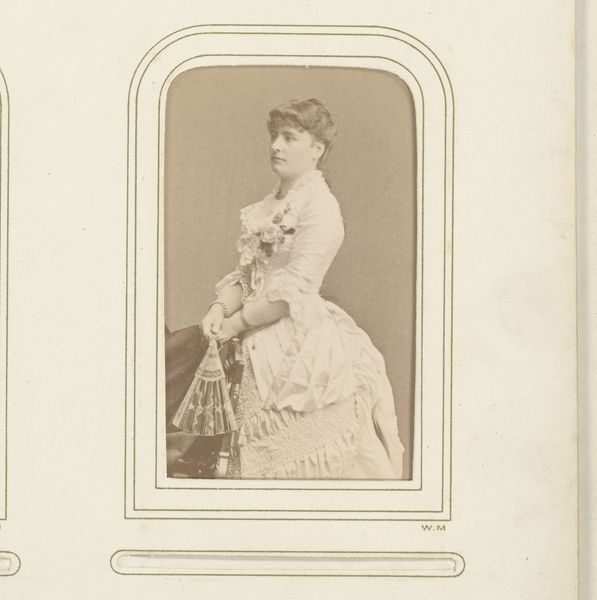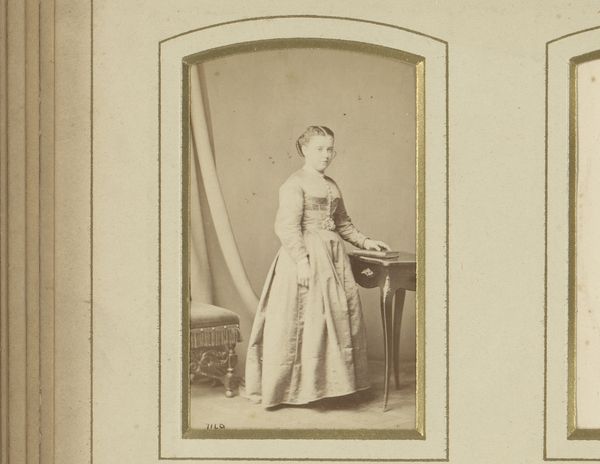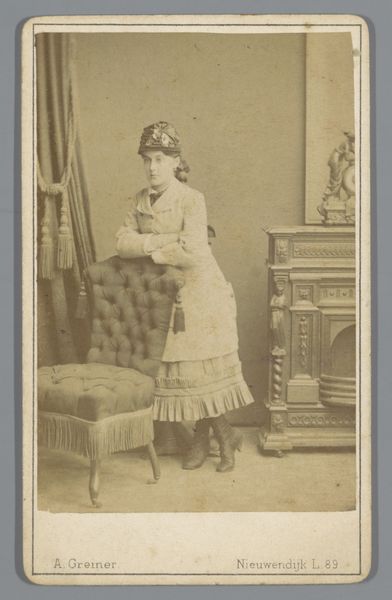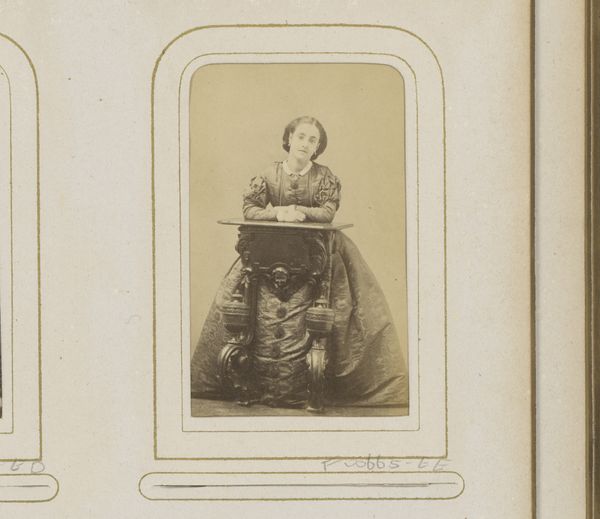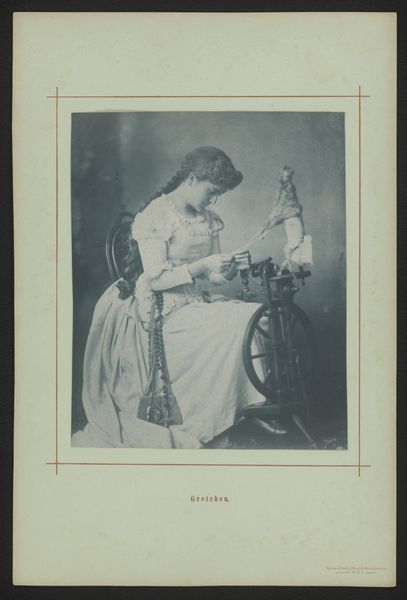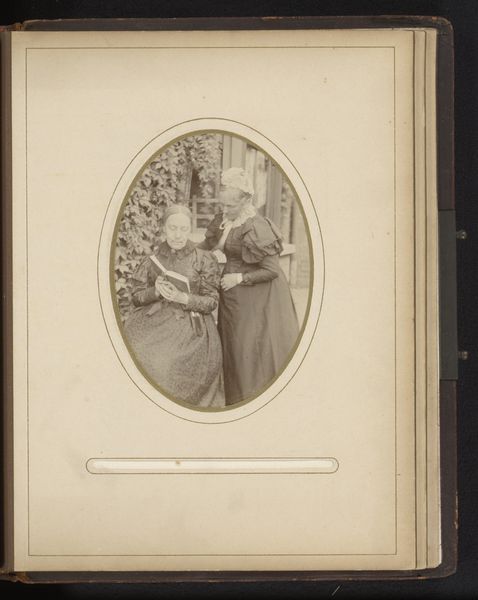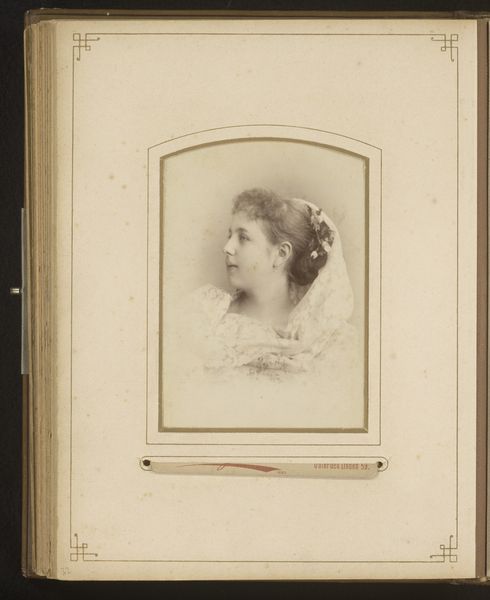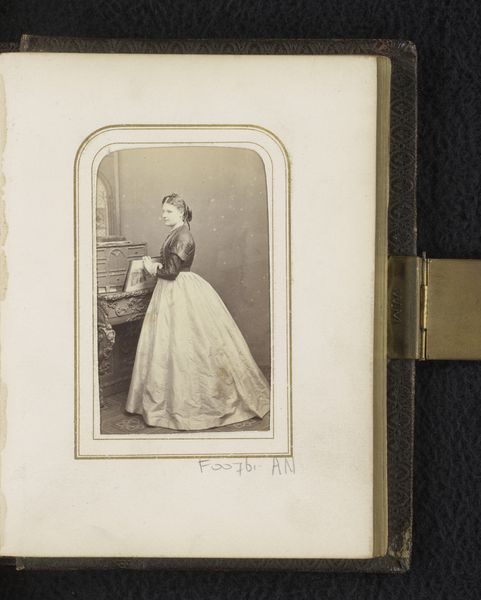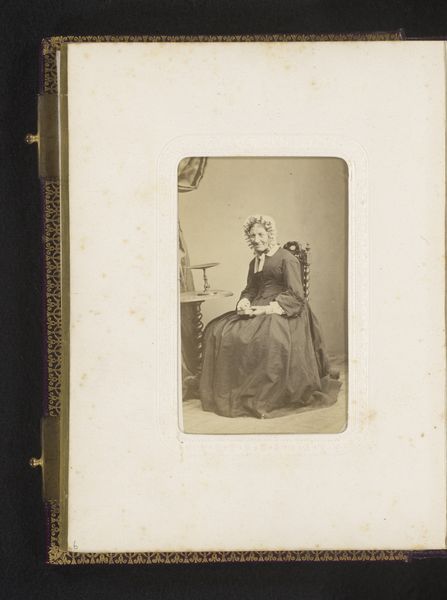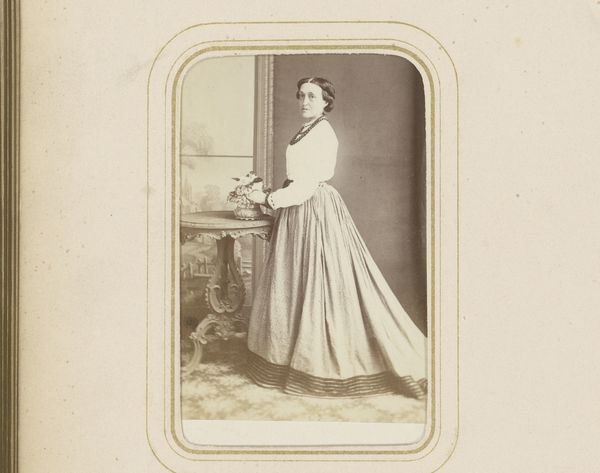
photography
#
portrait
#
still-life-photography
#
photography
#
19th century
Dimensions: height 137 mm, height 97 mm
Copyright: Rijks Museum: Open Domain
Curator: Ah, yes, this photographic portrait is titled "Portret van een vrouw, staand bij een tafel met bloemen," dating roughly between 1870 and 1890 by Benque et Klary. Editor: The initial mood is serene, almost dreamlike. The sepia tone gives it a quality of fading memory. Curator: Indeed, observe how the materiality contributes to this. The photograph itself, printed on albumen paper, a common process then, created from egg whites to bind light-sensitive chemicals to paper. Editor: It’s interesting, that choice. The use of something so domestic to fix a captured image, creating this enduring portrait. I see a strong association with traditional depictions of femininity—the flowers, the lace on her dress, even the way she leans demurely on the table. Each carries cultural symbolism of the late 19th century. Curator: Absolutely, let’s not overlook the material wealth evident here too. The detail and quality in rendering of her dress shows skilled craftsmanship; there is evidence of access to luxury in the quality of paper, dyes, even studio setting which, when combined, underscores her class. The twisted legs of that table must have required hours of labour to craft. Editor: Precisely. It reinforces a reading where these symbols intertwine with social identity and position. The floral arrangement, too, strikes me; its overflowing abundance could signal prosperity and, maybe, a certain idealized domestic sphere she occupies. Do you notice the miniature painting propped on the mantel? Curator: It speaks to both personal narrative and commercial photography's increasing accessibility. Editor: Considering how the subject posed formally, this might represent societal aspiration and self-presentation more than simply recording likeness. The symbols offer a rich language to consider this through. It has the timeless allure that persists because such visual cues remain potent cultural indicators. Curator: I concur; looking through that lens makes us understand that we examine not just a person, but production methods and cultural values inherent to it, revealing a compelling blend of intention and process. Editor: And the emotional and symbolic power inherent in the image; these are the qualities that cause it to transcend time.
Comments
No comments
Be the first to comment and join the conversation on the ultimate creative platform.
